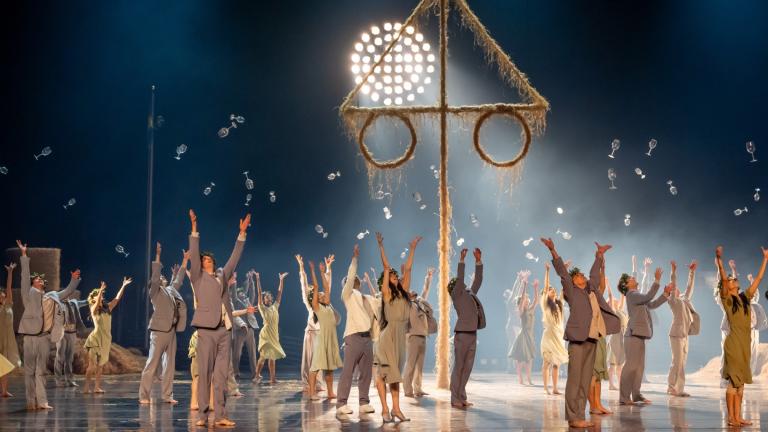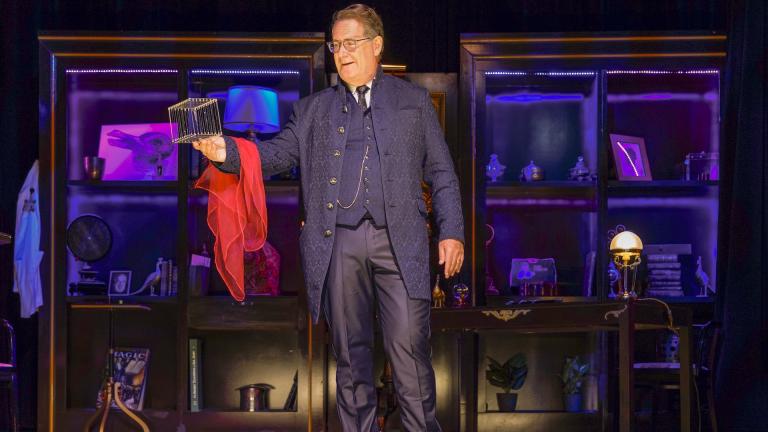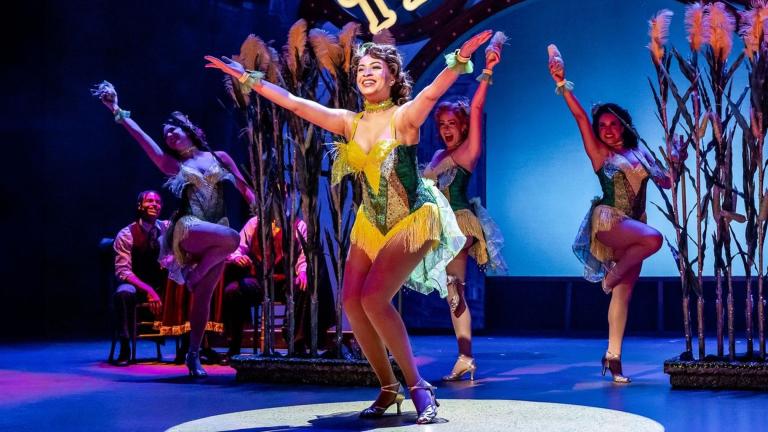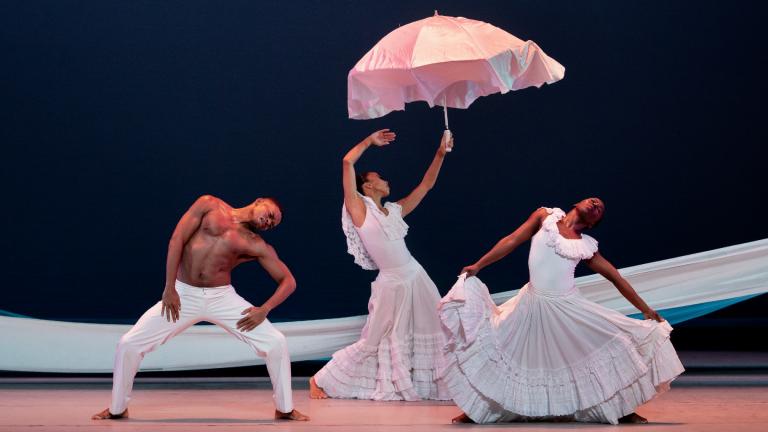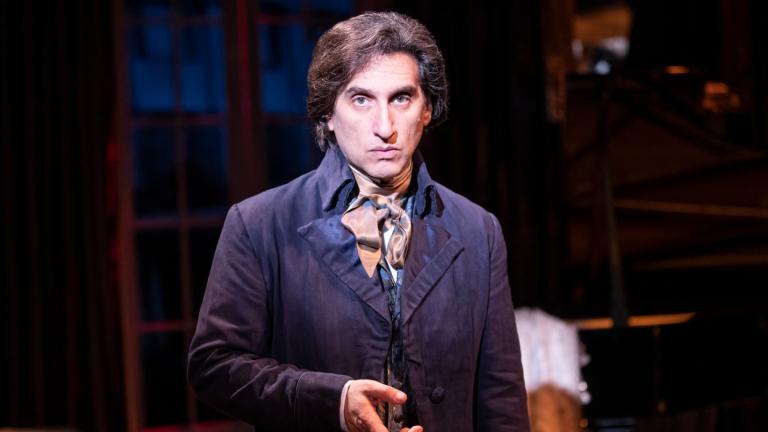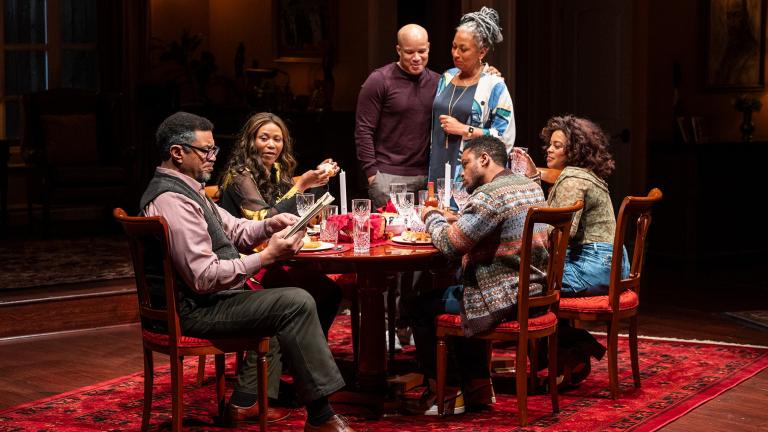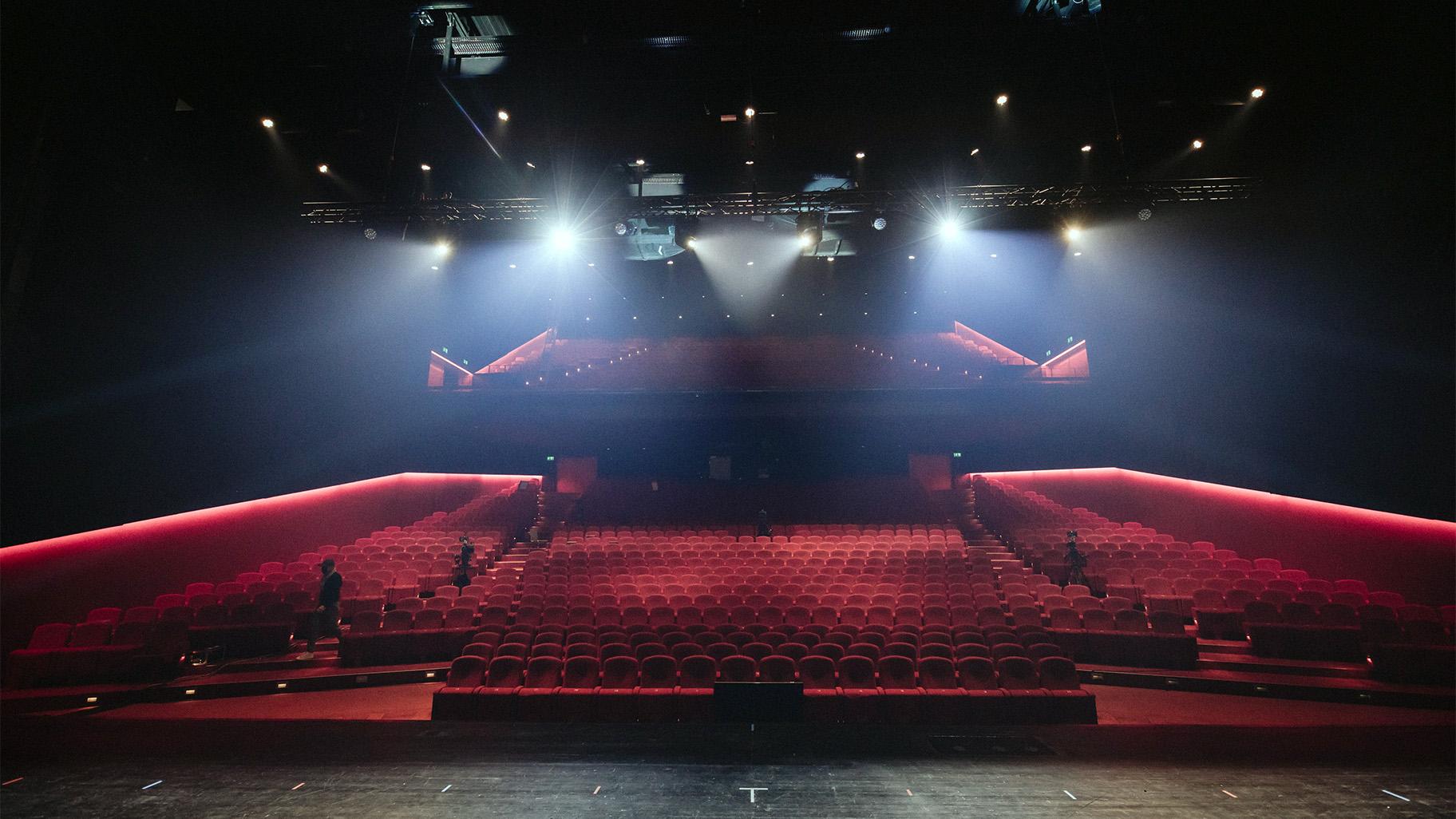 The view from the stage out into the nearly empty seats of a concert hall. (Kevin Schmid / Unsplash)
The view from the stage out into the nearly empty seats of a concert hall. (Kevin Schmid / Unsplash)
The COVID-19 lockdown in March 2020 was not the brief intermission Chicago’s arts scene first expected.
Productions were abruptly placed on hold when restrictions were announced and artists who sang for their supper performing to crowds were disoriented by the sudden audience deprivation.Some theaters and performing arts companies were so caught off guard that they were assuring their patrons that they should hold onto their tickets for what would only be a 10-day matter.
But as 10 days turned into three weeks, and three weeks turned into three months and ultimately into a new normal, wishful thinking about the virus was dispelled. Theater companies were left picking up the pieces and had to figure out how to adapt to virtual performances and new approaches to ticketing.
“We had to do a deep assessment of what does it mean to be a theater company when you couldn’t gather individuals together in a space to have a collective experience,” said Rachel Fink, Lookingglass Theatre Company's executive director.
Theaters and performing arts organizations had a commitment to not only entertain their audiences and subscribers, but also to stay afloat amid a new health and safety reality that made their traditional formats a potential hazard. And even as the threat of COVID-19 was gradually being neutralized, the seismic waves it sent caused catastrophic damages that will take years to recover from.
Dramatic drops
About a year into the pandemic, Arts Alliance Illinois reported $4.7 billion in cumulative losses for Chicago’s creative industries and more than $437,00 in average financial losses per Chicago arts and cultural organization, far higher than the national average loss at that point of $30,000 per arts and culture nonprofit, according to Arts Alliance’s 2021 report.
Steppenwolf Theatre's executive director, Brooke Flanagan, reported a nosedive from a $17 million annual operating budget pre-pandemic.
Goodman Theatre suffered similar misfortunes. According to its executive director, Roche Schulfer, the theater company took an $11 million hit.
Black Ensemble Theater, Chicago’s 46-year-old theater focused on African American culture, demonstrated how vulnerable smaller theaters were to the pandemic’s economic reverberations. CEO Jackie Taylor reported a 90% loss of income.
“We navigated through tightening our belt.” said Taylor, “We cut our expenses and increased our fundraising.”
However, with no productions to showcase, no patrons to entertain, and inactive performers and employees on their payrolls, theater companies and performing arts organizations struggled to balance their books and were losing money at an alarming rate, almost to the extent of collapsing if it wasn’t for external intervention.
“The funding that came from the federal government during the quarantine time in order to help make up for lost revenue was a game changer,” said Scott Speck, Chicago Philharmonic's artistic director.
The Shuttered Venue Operators Grant and the Paycheck Protection Program were laudable heroines according to many theater executives and artistic directors.
“The support that was generated from the Shuttered Venues and the Payroll Protection Program has been far more significant in helping us weather the financial crisis,” said Schulfer.
The Shuttered Venue grant provided emergency assistance for eligible performing arts businesses affected by COVID-19 across the country. Eligible applicants would qualify for grants equivalent to 45% of their gross earned revenue, with $2 billion reserved for eligible applications with up to 50 full-time employees. PPP on the other hand is a business loan program worth nearly $1 trillion aimed to help eligible businesses continue paying their workers.
Cuts and pivots
But even as art organizations exhausted federal and local relief programs, and board members showed a commitment to the arts by injecting additional funds into their theater and performing companies, furloughs were inevitable.
Goodman Theatre was only able to keep 150 employees while letting go of more than 150 freelance artists. Steppenwolf’s workforce dramatically shrunk from approximately 250 to 50 employees, and Lookingglass went from being a 33-employee operation to 13 employees, according to their respective executive directors.
But the show must go on.
The developing uncertainties of the pandemic, and the seemingly incessant losses prompted many theaters to improvise means of survival and necessitated an off-script transition to a new model of offstage theater. The word of the day during the pandemic was “virtual,” and so, theater companies and performing arts organizations had to break faith with tradition.
“Pivoting from an organization with a charter of live performance to one of recorded performance is not an easy journey,” said Philip Smith, Lookingglass’ artistic producer and ensemble member.
To get the show on the road, Lookingglass streamed older productions and collaborated with Chicago Public Schools to facilitate virtual residences for students. Steppenwolf also worked remotely with students and created virtual content for the first year and a half of the pandemic.
Goodman converted their traditional production of “A Christmas Carol” to an audio version and streamed live performances to viewers. And Chicago Philharmonic prerecorded artists and complied their performances into composite orchestras to share with subscribers.
This model proved practical for its operators, however, Speck warned that it might be a shortsighted shot in the foot if audiences become accustomed to watching live performances from the comfort of their homes.
“What they were doing was saying to the audience: look, you can look at this virtually and it’s almost like you’re sitting on stage. You’re even closer to the musicians than you would be in the concert hall. Isn’t this wonderful? And people were like, yeah, it is wonderful,” said Speck.
Many other performing arts executives and directors alluded to that same point. The streaming phenomena has been aggravating the on-demand media culture long before the pandemic exacerbated it. Audiences’ media consumption is now defined by the freedom to choose from a myriad of media products to consume at their convenience, and making live performances a click away from only perpetuated those habits.
Flanagan added that audiences have also forgotten the feeling of indulging in patronage as a result of the time spent isolated.
“I think the thing that we’re trying to study right now ... is the phenomenon of people not remembering how to be in communities, and how to build back into their muscle memory the act of seeing live artists performing as a community,” said Flanagan.
Theaters have already seen the effects of that changing consumption behavior play out, primarily in increasing single ticket sales at the expense of waning memberships and subscriptions. Audiences no longer feel inclined to commit to specific theaters and would rather explore their options whenever they feel like watching live art.
According to Schulfer, Goodman Theatre experienced a 33% drop in subscribers, which translates to a loss of “several $100,000 of revenue.” Goodman did witness an increase in single tickets sales from July 2021 through July of 2022 compared to pre-pandemic levels, but according to Schulfer, no theater company can solely survive on single tickets sales because it cannot bank on every show becoming a hit.
On the other hand, Smith highlighted that the increasing demand for content provided a lifeline for live performers and productions crews who were able to pivot and capitalize on Chicago’s thriving film and televisions industry to stay afloat when theaters were still shutdown. Simultaneously, however, the pressure on performers to constantly create content was immeasurable.
But Teatro Vista’s co-artistic director, Lorena Diaz describes it as a “transformative opportunity.” According to Diaz, the flexibility of virtual mediums allowed for an influx of art that engaged Teatro Vista’s ensemble collaboratively in an unprecedented way, and also leveled the playing field with larger theaters. The small theater focused on Latino culture was releasing content to tens of thousands of streams, and when theaters gradually reopened during the 2021/2022 season, Teatro Vista capitalized on the single ticket sales boom to sell out shows.
But Teatro Vista might be an anomaly, because according to Arts Alliance Illinois’ executive director, Claire Rice, organizations in the cultural sector across all artistic disciplines are reporting 30-50% in consistent decreased sales from 2019. No show rates have increased, subscriptions have declined, and despite restrictions easing, patrons are still making purchasing decisions at the last minute, making planning challenging for those producing and presenting events.
 Steppenwolf Theatre Company’s new Liz and Eric Lefkofsky Arts and Education Center, designed by architect Gordon Gill FAIA of Adrian Smith + Gordon Gill Architecture. (Credit James Steinkamp Photography.)
Steppenwolf Theatre Company’s new Liz and Eric Lefkofsky Arts and Education Center, designed by architect Gordon Gill FAIA of Adrian Smith + Gordon Gill Architecture. (Credit James Steinkamp Photography.)
Shows go on
But theater executives and artistic directors have expressed collective relief that patrons are back at all, even if they initially returned behind masks and separated by social distancing.
For many Chicago theaters, such as Steppenwolf, Lookingglass and Goodman, around 50% of their budgets derive from earned revenue which includes package sales through memberships, single ticket sales and other related sources of income such as cafes, restaurants and parking.
“You have local restaurants and parking facilities and other organizations that are benefiting from that economic engine that is represented by the arts,” said Flanagan, “we are an industry that is a huge part of our social fabric, of the social, emotional growth and development of our citizenry.”
Pre-pandemic, Chicago arts and culture nonprofits and their audiences had an annual economic impact worth $2.3 billion, according to Arts Alliance Illinois. Arts and culture nonprofits in Chicago generated an annual $336 million worth of revenue to local and state government and supported more than 85,000 fulltime employees.
And so, with audience behavior toward live art fundamentally changing even after they were no longer forced to stay at home, and productions reportedly costing more in the wake of the COVID-19 recession and the inflation surge that followed, Chicago’s creative industry’s entire ecosystem continues to be confronted with an existential crisis.
But hope is on the horizon, according to many artists and executives.
“I’m really heartened to see how much the city has increased its funding for artists and arts organizations,” said Sara Slawnik, director of programs at 3Arts, a Chicago nonprofit that supports women artists, artists of color, and Deaf and disabled artists, “it makes our city and our region and our state that much more appealing and exciting a place for artists to try and live and make their art here.”
This summer, Mayor Lori Lightfoot and the Department of Cultural Affairs and Special Events announced that 280 financial grants have been awarded to various Chicago arts organizations as part of Chicago’s 2022 CityArts Program. The awards follow the announcement that $26 million will be provided in new arts and culture investments as part of the city’s 2022 budget.
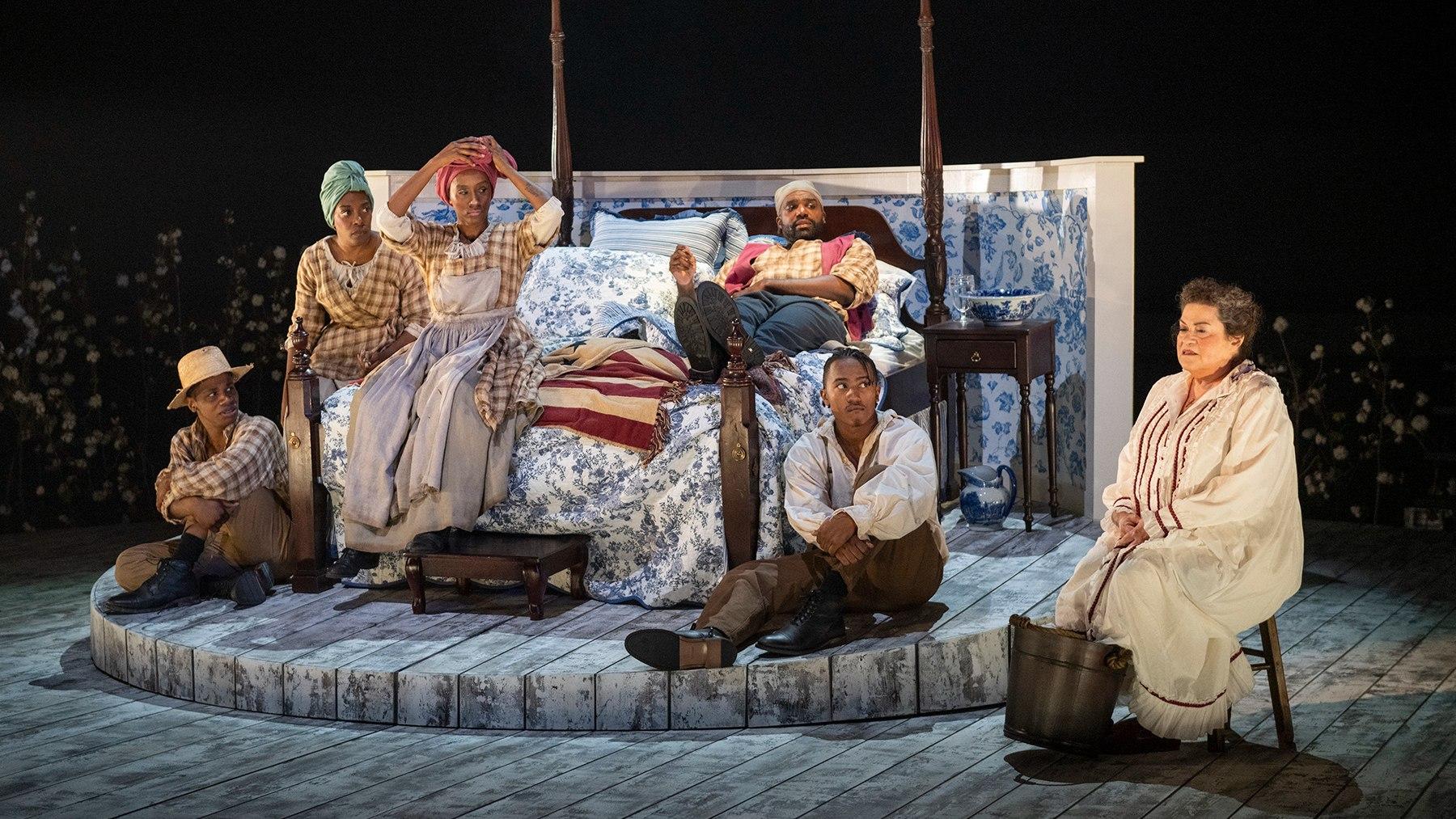 From left, Donovan Session, Sydney Charles, Celeste M. Cooper, Carl Clemons-Hopkins, Victor Musoni and Cindy Goldin in Steppenwolf Theatre’s “The Most Spectacularly Lamentable Trial of Miz Martha Washington” by James Ijames. (Credit: Michael Brosilow)
From left, Donovan Session, Sydney Charles, Celeste M. Cooper, Carl Clemons-Hopkins, Victor Musoni and Cindy Goldin in Steppenwolf Theatre’s “The Most Spectacularly Lamentable Trial of Miz Martha Washington” by James Ijames. (Credit: Michael Brosilow)
New normal
Many theater executives are hopeful that the new funding becomes the baseline for future support of the arts and not just a reaction to the pandemic’s ramification.
Schulfer, pointed that COVID-19 is not a one or two-year hiccup, its effects will linger on for the foreseeable future as society grows to view it as an endemic that it can live with, rather than a pandemic that triggers its fight-or-flight responses with every variant and wave of cases.
That is why the return of spectators seems to be the holy grail for performing art organizations.
Audiences fuel the income motors for performing arts organizations and their return was the driving force behind the plethora of productions lined up for the 2022/2023 season.
Steppenwolf kicked off a new season in September with James Ijames’ “Miz Martha” which was in rehearsal when the theater shutdown in 2020. Chicago Philharmonic had a busy summer with performances in Wisconsin and Virginia, and Black Ensemble is back producing 90-minute shows after having to produce one-act shows during the pandemic.
But according to Diaz, the hybrid model that many theaters were forced into will eventually become the new reality as more artists and directors creatively engage with audiences and technology. Through the costs it saved from producing virtual shows, Teatro Vista was able to grow from a $250,000 budget per season to a $250,000 budget per production.
Lookingglass is also looking to build on the success of its virtual production, 50 Wards: A Civic Mosaic, which covers five Chicago wards per year, until they complete the series around 2030.
“We want to mean more than just a theater company. We want to mean more than just a place that puts on plays. We want to mean something that is about civic life in Chicago,” said Smith, “trying to work harder at connecting more of us to more of us, which is a different charter than just putting on plays.”

